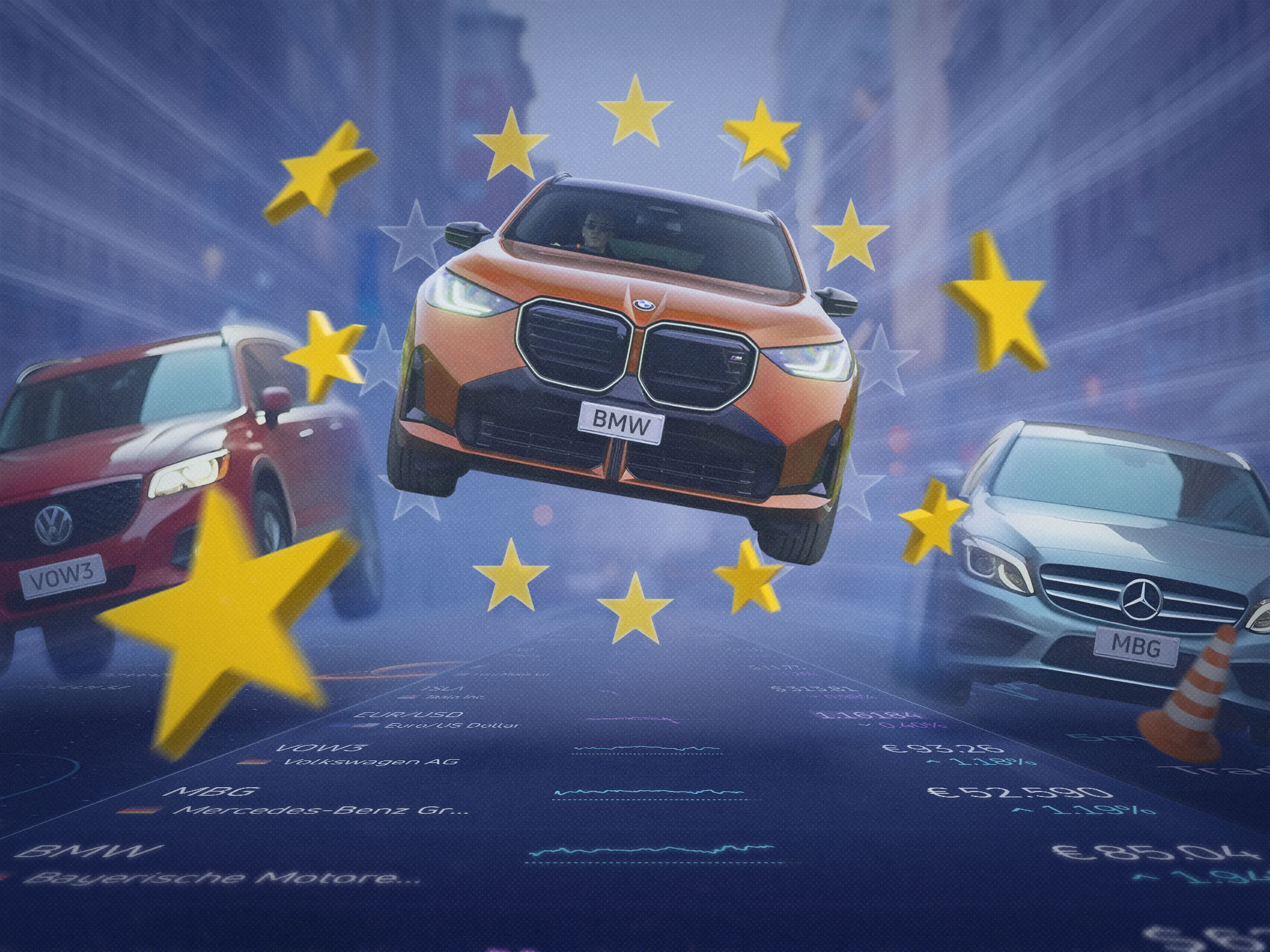German automakers like BMW Group (CBOE: BMW), Mercedes-Benz (CBOE: MBG), and Volkswagen (CBOE: VOW3) are navigating a complex global market, with Europe emerging as a vital stronghold for their sales. A surge in European vehicle demand, encompassing both traditional and electric models, is providing a buffer against challenges in regions like the U.S. and China, where economic uncertainties and trade barriers are reshaping the industry.
BMW Group delivered 621,271 vehicles globally in the second quarter, achieving a modest 0.4% sales increase. Europe drove this growth with a 10.1% rise in sales, counterbalancing a steep 13.7% drop in China and a slight 1.4% uptick in the U.S. The company’s electric and plug-in hybrid vehicles saw a 10.2% global sales increase, fueled by strong demand for BMW-branded plug-in hybrids and Mini’s fully electric models. BMW’s Spartanburg, South Carolina plant, which produces models like the X3 and X5, helps shield the company from the U.S.’s 25% tariff on imported cars and parts, implemented in April.
In contrast, Mercedes-Benz faced a 9% global sales decline, with a 12% drop in the U.S. and a 19% fall in China, where aggressive pricing by local automakers intensified competition. Sales in Germany, however, rose by 7%, underscoring Europe’s critical role. The company’s battery-electric vehicle sales plummeted by 24% in the quarter. Production at its Tuscaloosa, Alabama plant, assembling models like the GLE SUV, offers some relief from tariffs, but reliance on imports continues to strain performance.
Volkswagen reported a 1.2% global delivery increase, propelled by Europe and a 2.8% rise in China, despite a 16% decline in North America. Battery-electric vehicles accounted for 11% of its global deliveries in the first half, up from 7%, reflecting Europe’s growing appetite for EVs. The company’s upcoming earnings report on July 25 will offer further insight into its trajectory.
Several factors explain Europe’s sales strength. The region’s relatively stable economy, supported by low unemployment rates—such as 4.1% in the U.S. in June, with similar trends in Europe—has sustained consumer confidence. Stringent emissions regulations and incentives are accelerating demand for electric and hybrid vehicles, particularly for BMW and Volkswagen. Meanwhile, the U.S. tariff has hit Mercedes-Benz hardest, while BMW and Volkswagen benefit from localized production. In China, fierce price competition from domestic brands continues to challenge German automakers.
Looking ahead, BMW Group’s diversified portfolio and strong European performance position it for stability. Its emphasis on electric vehicles aligns with regional trends, likely sustaining growth in Europe, though declines in China may push the company to expand production in Europe or the U.S. Modest global growth of 1-3% annually seems feasible if European demand holds. Mercedes-Benz, grappling with import reliance and weaker EV sales, faces a tougher path. To recover, it may need to ramp up U.S. production or develop more competitive EV models, with sales declines potentially persisting into 2025 unless pricing strategies adapt. Europe remains a lifeline for stabilizing its global losses. Volkswagen’s balanced presence and EV growth suggest resilience, with Europe and China driving potential 2-4% annual delivery growth, assuming North American sales stabilize. Its upcoming earnings may signal deeper EV investment to leverage Europe’s green transition.
The road ahead remains challenging, with U.S. tariffs, China’s pricing wars, and global economic uncertainty shaping the landscape. German automakers may need to further localize production or adjust pricing to stay competitive. Europe’s role as a sales anchor is likely to strengthen, but achieving sustained global recovery will hinge on adeptly navigating these obstacles.




Comments